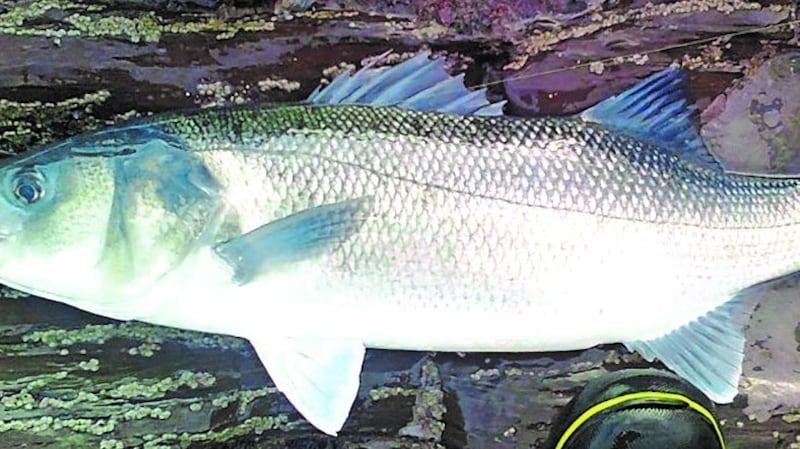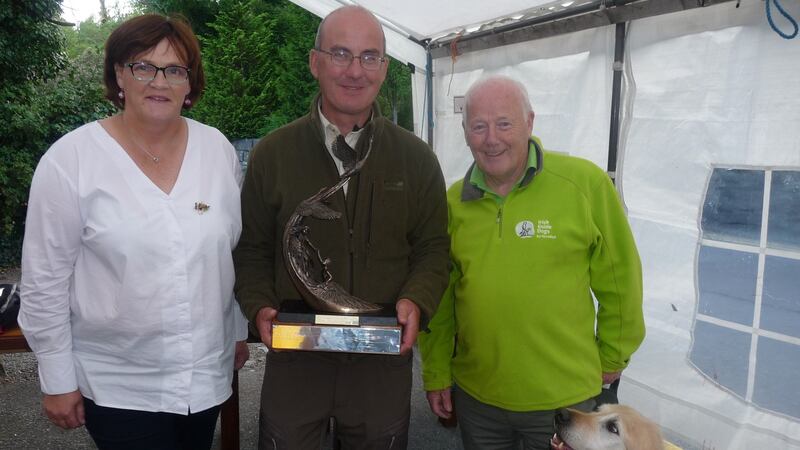I have been asked on numerous occasions what the new regulations are for Irish seabass for 2018. While I did include the up-to-date situation in my column in January, I feel I should reiterate the position again.
Following negotiations by the Minister for Marine, Michael Creed TD, at a fisheries council meeting in Brussels last December, the European Union (EU) introduced new regulations for the Irish seabass recreation fishery, which will operate on a catch and release basis for 2018.
(Initially, the EU proposal was for a complete ban for six months and a catch and release fishery for six months.)


Article 9.4 of Council Regulation (EU) 2018/120, states: “In recreational fisheries, including from shore, in International Council for Exploration of the Sea (ICES) divisions 4b, 4c, 7a to 7k, only catch-and-release fishing for European seabass shall be allowed. It shall be prohibited to retain on board, relocate, tranship or land European seabass caught in that area.”
The regulation sees a consistent approach being applied throughout the Irish coastline.
Bass anglers have an extremely positive approach to bass conservation, catch and release, and the requirement for good handling in order to maintain the species and their recreational activity.
Anglers, through their conservation-oriented ethos, have been the key stakeholders in supporting research into bass stock status over the past five years by providing catch and fish stock data, which has underpinned provision of scientific and management advice.
According to the National Strategy for Angling Development document, the total expenditure of anglers from all markets on Irish bass and sea angling is in the region of €52 million and €116 million, respectively.
Autism charity event on Loughs Corrib and Mask
There was a terrific turnout for the annual autism competition on Loughs Corrib and Mask last weekend where 52 anglers from across Ireland came together to support this worthy cause. Now in its fifth year, the event has, so far, raised over €20,000 for children with special needs.
For the past two years, monies raised have gone to the Irish Guide Dogs (IGD) and this year €4,100 was collected from anglers, sponsors and friends. All of which was gratefully received by Galway’s IGD director, Frank Downes and guide dog ‘Gallagher’.
“It costs €38,000 to fully train a guide dog. However, those that don’t quite make it are ideal for assisting autism children,” Frank Downes said. Over the past 18 years he has raised a staggering €2 million!
Competitors had the choice to fish either Corrib or Mask, and looking back, the former has proved more successful. This year was no exception where 36 fished Corrib with a catch of 28 against 16 anglers on Mask for six trout.
Results: 1, Mark Regan, 4 fish, 3.290kg; 2, Tom Doc Sullivan, 2f, 2.260kg; 3, Basil Shields, 3f, 2.110kg; 4, Stuart McGrane, 2f, 1.490kg. Heaviest fish went to Mark Regan at 1.240kg.
Organiser of the fundraiser, Dorrie Gibbons, said: “I would like to thank our sponsors and anglers who have continued to support this charity event since it started in 2014. Their generosity knows no bounds.”
Concern over pollution incidents arising from Dubliln Airport’s carparks
A submission by an environmental watchdog has flagged alleged pollution incidents arising from Dublin Airport’s carparks. An application is before An Bord Pleanala under the Strategic Infrastructure Act to allow the permanent use of 10,880 long term car parking spaces on 36 hectares of land.
According to Friends of the Irish Environment (FIE), records provided show repeated breaches of statutory limits for both dissolved oxygen and biological oxygen demand as well as four petroleum hydrocarbon concentration spikes.
In their objection, FIE has told the board that ‘there is no explanation of the causes of these pollution episodes’.
And yet The Environmental Impact Assessment Report and the Appropriate Assessment Screening state in relation to these polluted rivers, which it acknowledges have poor water quality, that “no significant water quality issues have been identified’ and that the ‘potential risk will not result in an adverse impact on surface water quality in the receiving environment of the car parks”.
This is ‘profoundly misleading’, according to FIE, ‘directly contradicting as it does the sampling results in the same document. The 36 hectares of surface car parks drain into the Mayne and Quinn River/Santry River catchments’.
These rivers have been identified as having poor or bad status respectively in the River Basin Management Plan and have been designated as “Areas for Action” under the legally binding plan with a date of 2027 to restore good status, FIE said.
For further details, contact: Tony Lowes 353 (0)27 74771 / 353 (0) 87 217 6316.
angling@irishtimes.com.














